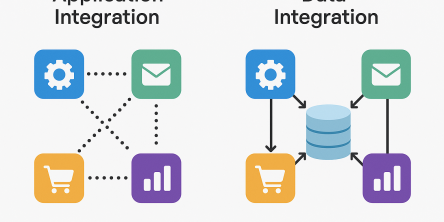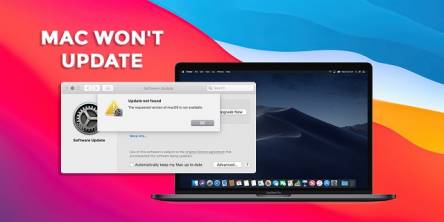What To Look For in Permit Tracking Software: Key Features For Construction Teams
In the construction world, time equals money. Whether you're managing a small crew or overseeing a large-scale project, delays in permitting can quickly throw your schedule off track. Missed deadlines, slow approvals, or not knowing where an inspection stands can bring progress to a standstill. More often than not, the root of the issue is outdated or inefficient tracking systems.
That’s where modern permit tracking software comes in, designed to streamline the entire permitting process and keep your projects moving forward.
If you’re still handling permits with spreadsheets, scattered emails, or stacks of paper, it might seem manageable—until something slips through the cracks. Missed deadlines, misplaced documents, and unclear responsibilities can quickly derail even the most organized project. That’s where modern permit tracking software proves its value. Tools like Pulley permitting construction software are built to streamline the process, giving your team real-time access to every permit across every job site.
But not all systems are created equal. Before you invest in a platform, it’s important to know which features truly improve day-to-day operations. Here’s what to look for if you want a solution that saves time, minimizes risk, and helps your projects stay on schedule.
1. A Clear, Centralized Dashboard
It all starts with visibility. A strong permit tracking platform should offer a centralized dashboard that shows the status of every permit, whether it’s pending, approved, expired, or rejected, all in one place. No more digging through email chains or guessing who’s following up.
Look for software that lets you filter permits by project, permit type, or jurisdiction. Bonus points if it flags urgent tasks like upcoming deadlines or expired documents. A simple, user-friendly interface helps everyone from office staff to field crews stay informed and aligned.
2. Automated Reminders to Stay on Track
Manually tracking permit dates is a recipe for missed deadlines. A great permit system should automatically send reminders for key events like submission deadlines, inspection dates, or renewals.
Even better? Customizable notifications. The ability to choose who gets which alerts, and how often, means your team stays proactive without being overwhelmed. Let the software handle the follow-ups so your people can stay focused on the build.
3. Built-In Document Storage and Version Control
Permits often come with a mountain of paperwork, blueprints, insurance forms, environmental reports, and more. Your permit tracking tool should offer centralized document storage with tagging and upload features that make it easy to find what you need.
Version control is also critical. When changes are submitted or documents are updated, everyone should be working from the same file. No more accidental resubmissions or using outdated plans.
4. Permission-Based Access
Not every team member needs access to everything. Maybe your project managers need full visibility, while field supervisors just need to check permit status. Subcontractors might only need access to their own scope.
Good permit tracking software lets you control user access, so each team member only sees what’s relevant to them. This protects sensitive data and keeps your workflows clean and efficient.
5. Local Jurisdiction Templates and Checklists
Permit requirements vary widely depending on the city, county, or state. Some places need hard copies, others use digital portals. Approval times can vary from days to weeks.
Look for software that supports local jurisdiction templates or provides pre-built checklists for different regions. This feature is especially valuable for teams working across multiple locations. It reduces guesswork and ensures submissions meet local requirements the first time.
6. Inspection Scheduling and Tracking
Permits aren’t just paperwork they also involve inspections. A strong system should let you schedule inspections, track outcomes, upload reports, and mark next steps.
By managing inspections within the same platform, your team can avoid missed visits, reduce rework, and keep jobs moving without unnecessary hiccups.
7. Integration with Your Existing Tools
The last thing you need is another disconnected platform. The best permit tracking software integrates seamlessly with tools your team already uses, like Procore, Buildertrend, Autodesk, or your accounting system.
This reduces double entry, minimizes errors, and saves time by keeping everything in sync across your project management ecosystem.
8. Mobile Access for Field Teams
Construction doesn’t happen behind a desk, and your software shouldn’t either. Permit tools need to work just as well in the field as they do in the office.
Choose a platform with mobile access that lets your team check statuses, upload photos, and get real-time notifications from a phone or tablet. Some tools even offer offline functionality, ideal for remote job sites with limited service
9. Reporting and Insights
Beyond day-to-day tracking, your software should help you identify long-term trends. Maybe certain jurisdictions always delay approvals. Maybe some project types hit more roadblocks.
With built-in reporting tools, you can spot these bottlenecks, adjust your workflows, and make smarter decisions going forward. It’s not just about staying organized, it’s about improving your overall permitting process.
10. Reliable Support and Onboarding
Even with user-friendly software, a good support team makes a big difference, especially if you're transitioning from manual systems. Look for vendors that offer thorough onboarding, training resources, and responsive customer support.
When issues pop up, you want help fast so your projects don’t get held up waiting for answers.
Final Thoughts
The purpose of permit tracking software isn’t just to digitize your current process, it’s to improve it. With the right tools in place, you can keep your team organized, meet deadlines more consistently, and avoid unnecessary delays that cost time and money.
If you’re still relying on spreadsheets, email threads, or manual reminders, it may be time to upgrade. Modern permit tracking software turns a common construction headache into a streamlined, reliable part of the workflow.
Similar Articles
Every news publisher's dream, or just getting started, hits that wall sooner or later. What do you build your site on? You’ve basically got two roads: WordPress or custom development.
Thanks to cloud computing, specialized SaaS apps have become rather accessible.
Let’s be honest – managing royalties isn’t exactly the fun part of working in media or publishing, but it is very important because it protects the creator’s rights and work ownership.
The Software as a Service (SaaS) industry continues to transform before 2025 which creates new obstacles for business operations.
Given that insurance underwriting is highly competitive, insurers must harness advanced technologies to enhance customer service and communication, business practices, and decision-making in particular.
We all use Mac OS often, and there are situations when the OS just doesn’t update. Obviously, it’s important to have the latest feature and security updates.
Implementing home health systems is a complex process that requires skillful planning and preparation. You’ll want to identify the areas for improvement as well as the features that impact your agency.
Boost revenue and build trust by tracking declined services at your auto shop. Learn how this simple step can improve customer retention and shop efficiency.
For a person who works in the transportation industry for more than 15 years, I have experienced this shift through technology. I’ve witnessed how technology has altered the way we move people.









